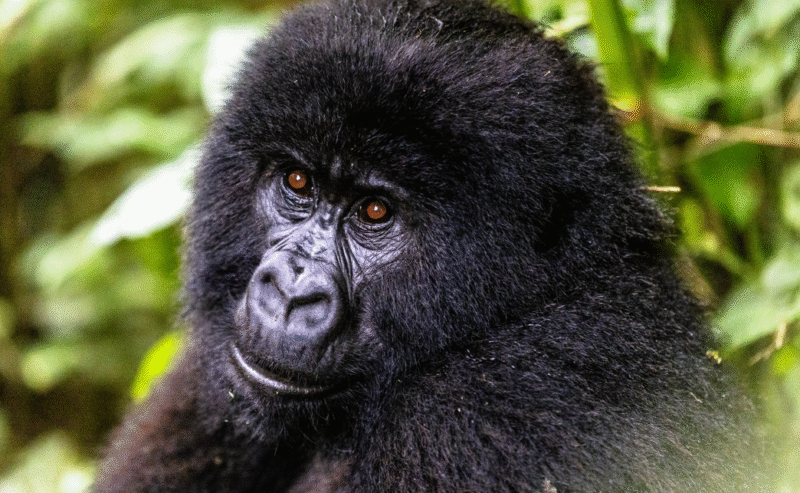
Support Virunga this Giving Season >
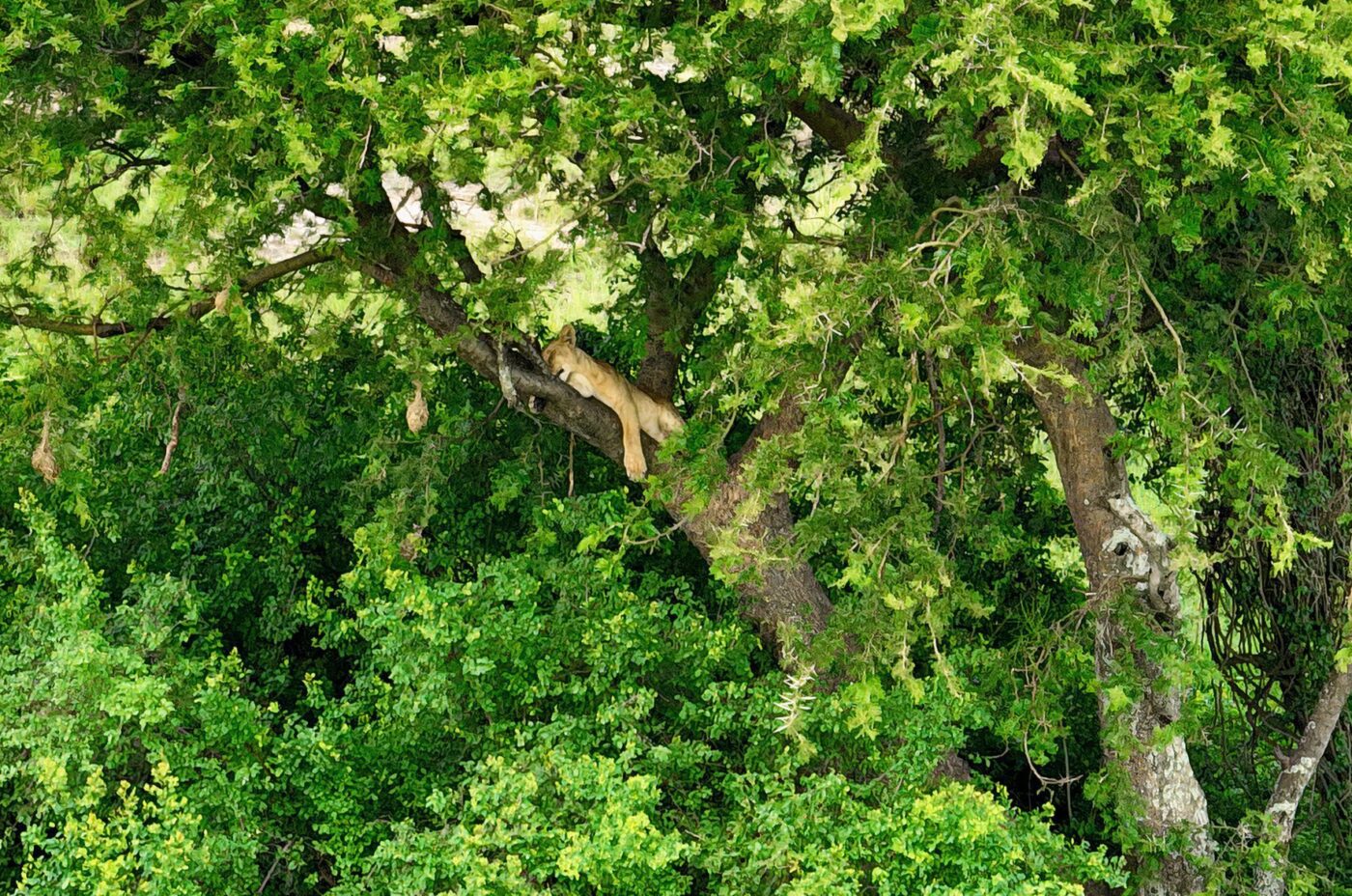
The tree climbing lions of Virunga's Ishasha Valley
Having once inhabited large swaths of the Middle East and Asia, lions are now found only in Africa and Western India’s Gir Forest. Estimating there to be less than 25,000 left in the wild, the IUCN has classified the species as vulnerable to extinction, making protection of the Ishasha Valley population crucial to its survival.
Due to poaching, habitat-loss, reduced number of prey-animals and conflict with humans, the world’s remaining lions inhabit just 6% of their historic range.
The grass- and woodland savannahs of the Ishasha Valley near Lake Edward’s southeastern shore provide Virunga lions a refuge that must be protected.
The African subspecies is typically found in grassland savannah, woodlands and scrub – defined as land dominated by shrubs and low-lying woody vegetation. The tree-climbing lions of Virunga live primarily in the Ishasha Valley – a transboundary ecosystem co-managed with Uganda – where they compete with humans for habitat and resources.
Lionesses generally remain in their prides for life, raising cubs communally, whereas male lions leave as subadults, roaming independently or forming all-male coalitions to increase reproductive success.
A male belonging to a pride must guard its territory and defend against other males who seek to join or take over.
Lions are the only species of big cat which lives in social groups. Known as prides, they comprise a few males, several females and their cubs. Despite males being stronger, the faster females are the pride’s primary hunters. Typically lions prey on large mammals, like buffalo and antelope, which are in decline in the Ishasha Valley.
A cub’s unique spot pattern gradually fades as it grows older, after which a distinctive whisker pattern allows for identification in the wild.
Lions develop the ability to roar from the age of around one, and the roar of an adult can be heard up to 5 miles (8 km) away.
After tigers, African lions are the Earth’s second largest feline. They are also the fourth largest land predator. Males have manes that darken with age and they can weigh up to 500 lbs (225 kg), whereas females weigh 265 lbs (120 kg) on average. Faint spots adorn the fur of lion cubs, helping them to avoid detection from predators.
The majority of Virunga’s lion population resides in the transboundary area of the Ishasha Valley, which is jointly managed between Virunga National Park and Queen Elizabeth National Park in Uganda. Historically, there were as many as 100 lions in the valley but years of poaching, land invasion and conflict have pushed this population to the brink. Virunga is working hard to restore its critical habitats of the Ishasha Valley and recover its population of keystone species like the majestic lions.
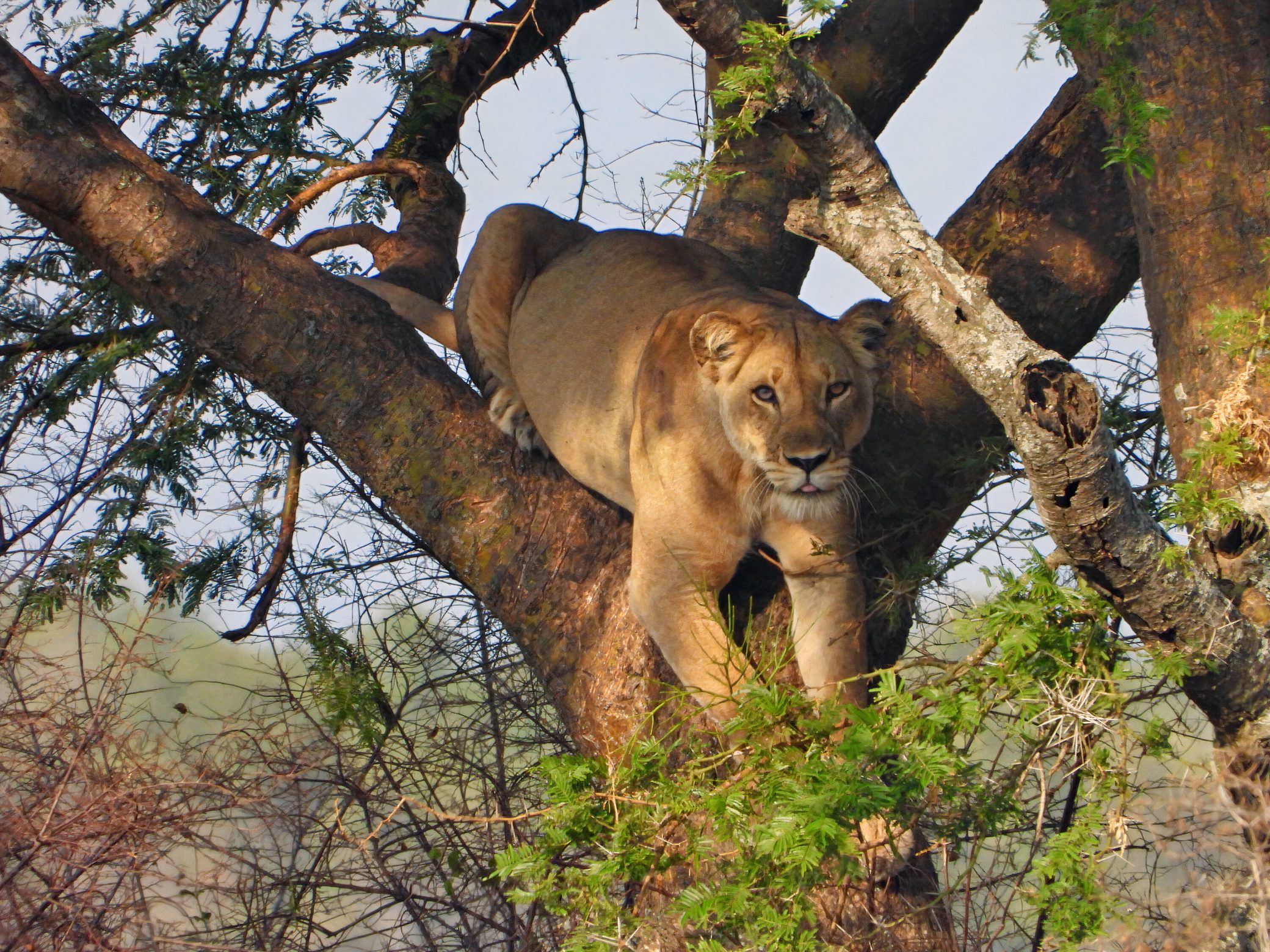
Lions are now missing from 94% of their historic range.
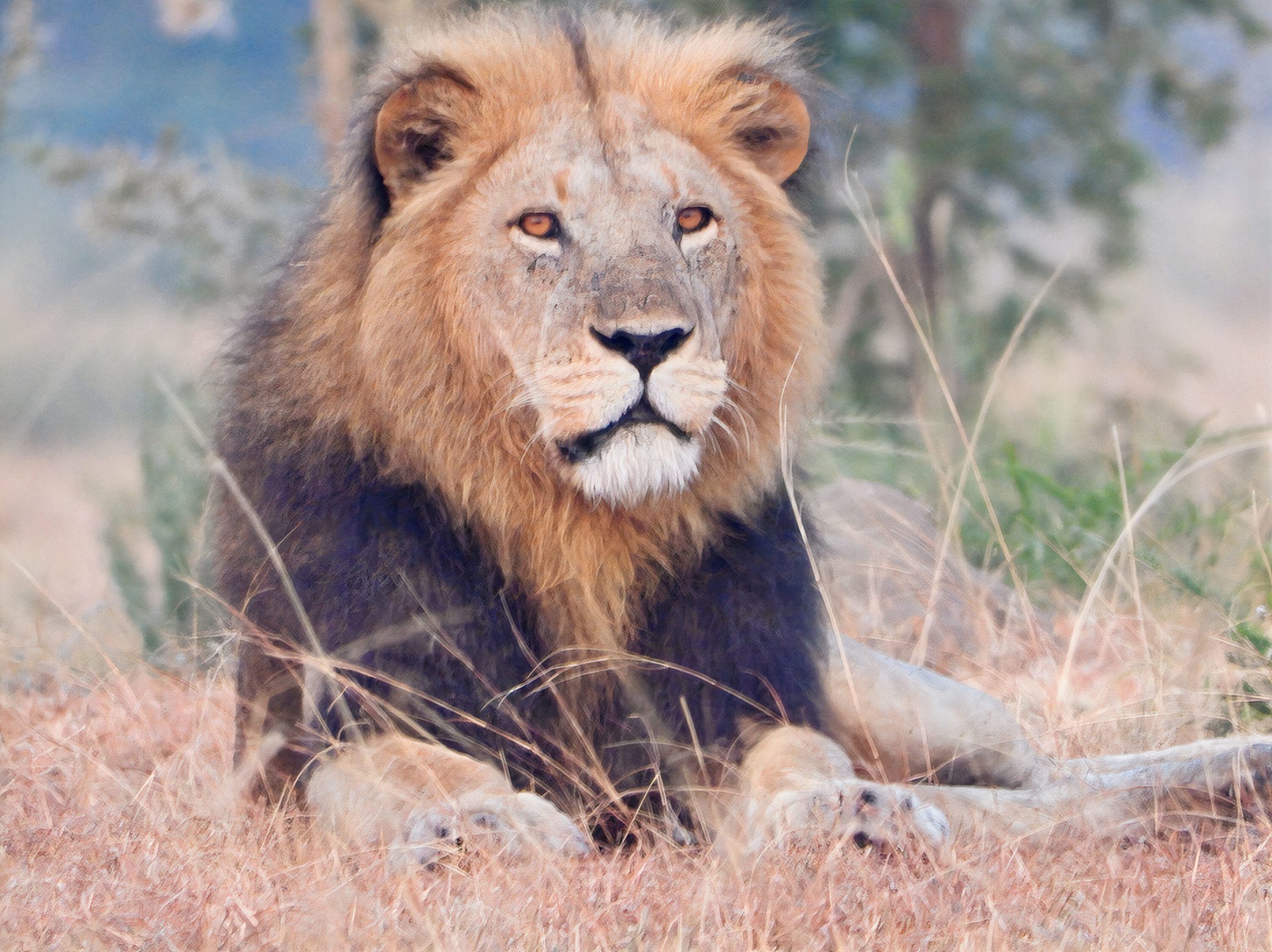
The majority of threats that impact lions are caused by humans and their activities.
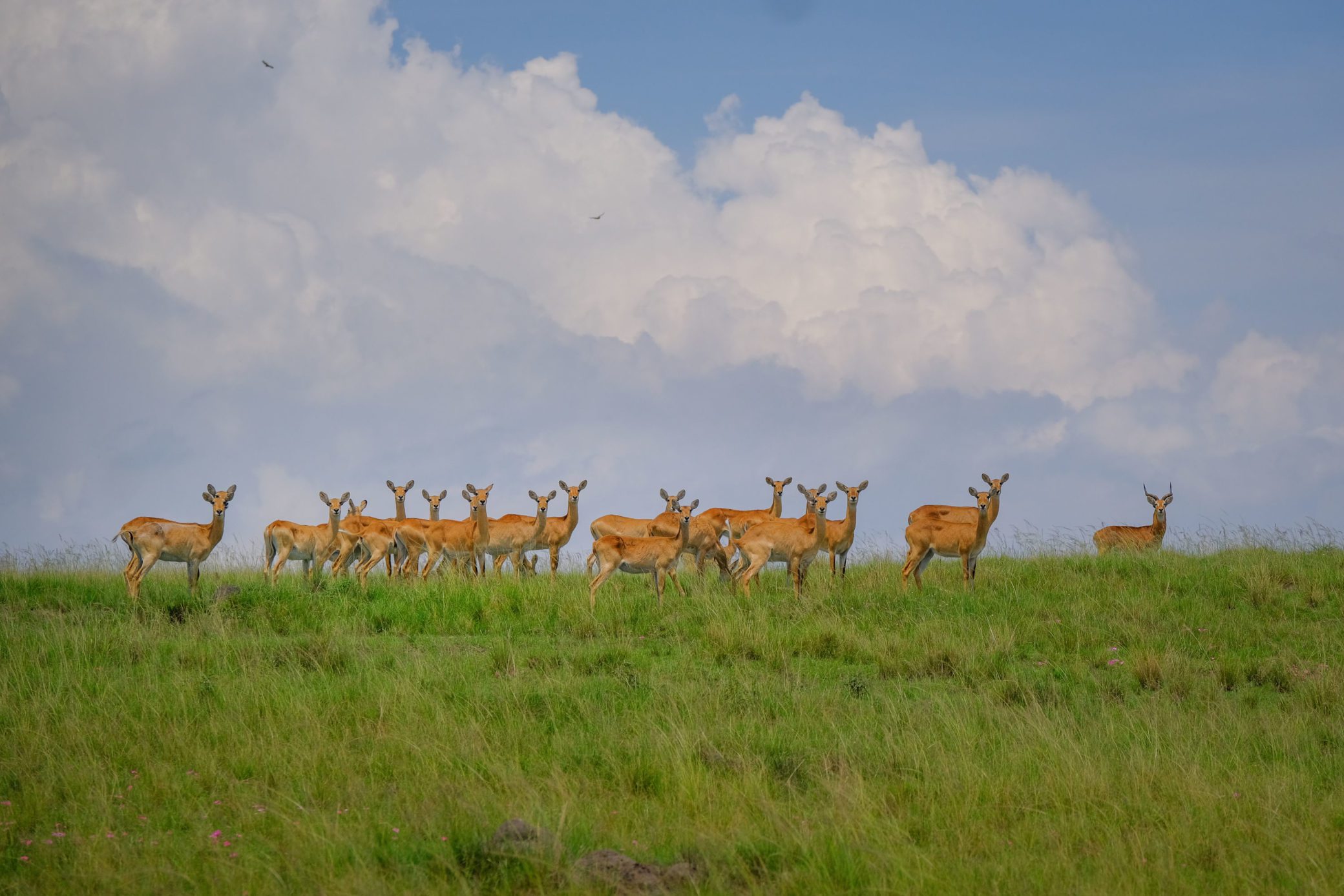
Fewer prey animals due to poaching, habitat loss and environmental pressures.
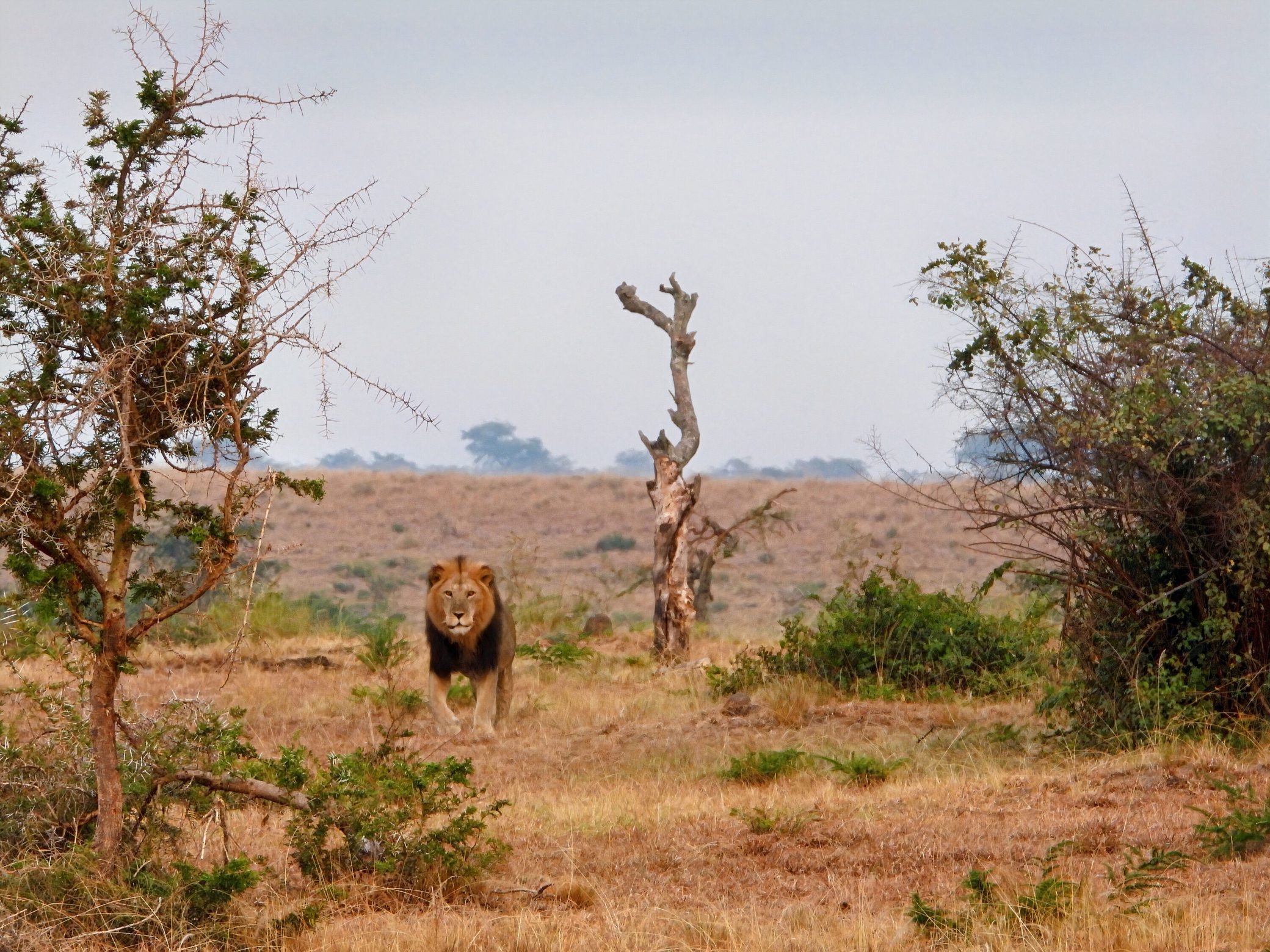
Lions are vulnerable to illegal poaching for the black market.
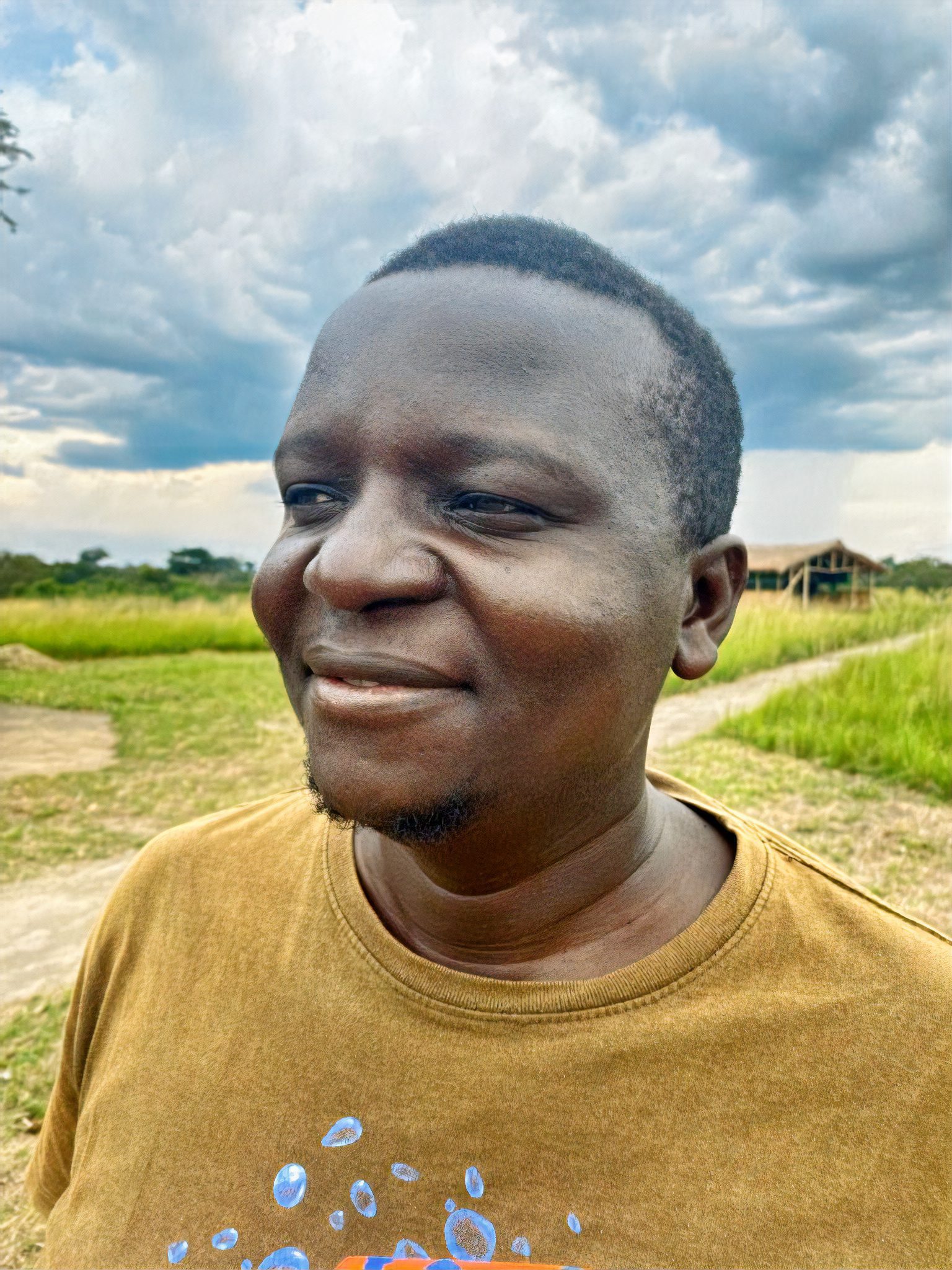

Make A Donation
Adopt
Shop Clothing
Q. Are there lions in Africa?
A. Yes, lions live across several African countries, primarily in sub-Saharan regions such as Tanzania, Kenya, South Africa, Botswana, and the Democratic Republic of the Congo. They typically inhabit savannas, grasslands, and open woodlands.
Q. Where do African lions live in Virunga National Park?
A. African lions in Virunga National Park are mainly found in the Ishasha Valley — a cross-border area between the Democratic Republic of the Congo and Uganda, located in the Park’s Central Sector. These open savanna regions provide ideal hunting grounds and space for pride territories. Virunga’s conservation efforts focus on preserving these vital habitats to support a stable lion population.
Q. What is the African lion’s scientific and common name?
A. The African lion’s scientific name is Panthera leo, with the East and southern African populations sometimes classified as Panthera leo melanochaita. They are also known by local names such as Simba in Swahili or Nkosi in Zulu.
Q. How strong is an African lion?
A. An adult male African lion can weigh between 150 and 250 kg and deliver a bite force of around 600–650 PSI. They are powerful predators capable of hunting large prey such as buffaloes or zebras.
Q. How fast are African lions?
A. African lions are powerful and surprisingly fast predators. They can reach speeds of up to 50 km/h (about 31 mph), but only in short bursts of around 100–200 meters. This speed allows them to ambush and chase prey effectively, rather than sustain long-distance runs.
Q. Are African lions endangered?
A. African lions are classified as Vulnerable by the IUCN. Their populations are declining, particularly outside protected areas, due to habitat loss, human-wildlife conflict, and poaching. Conservation efforts such as anti-poaching patrols and habitat protection are essential for their survival.